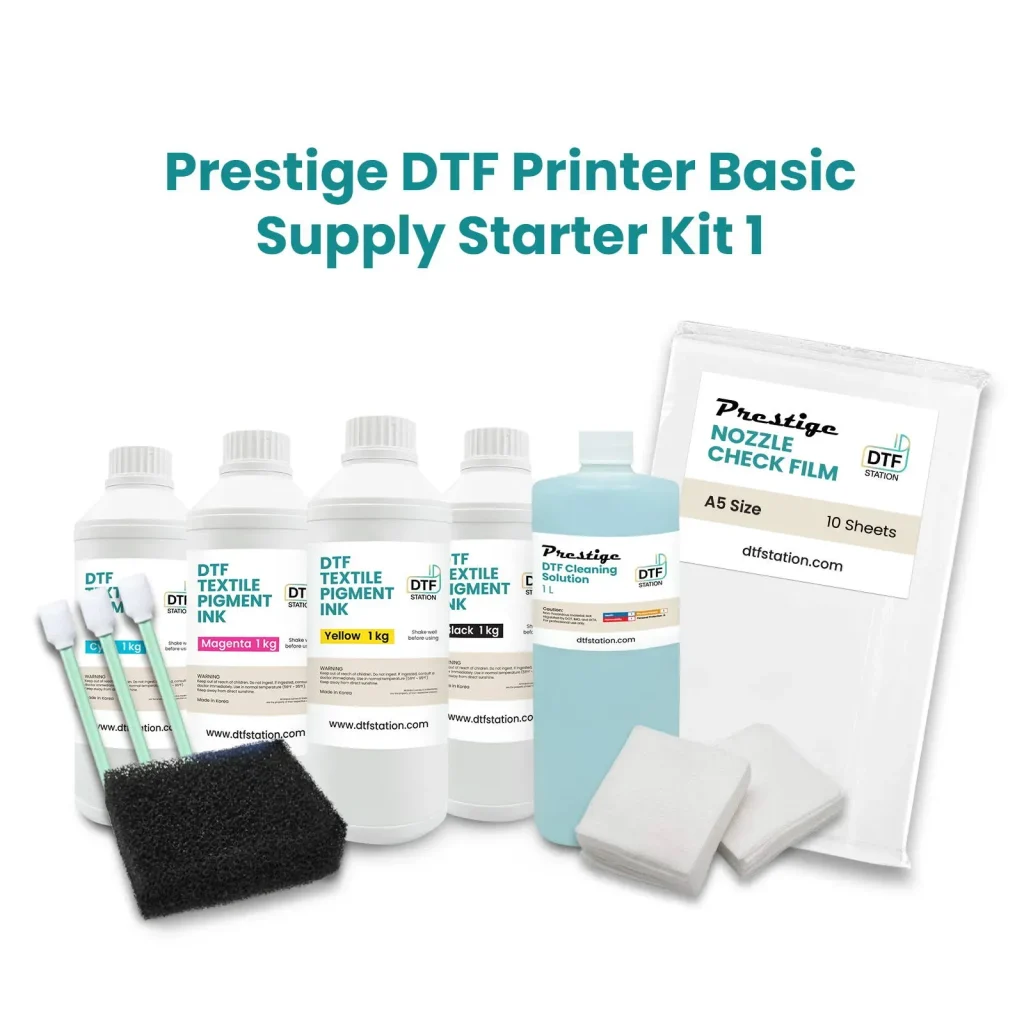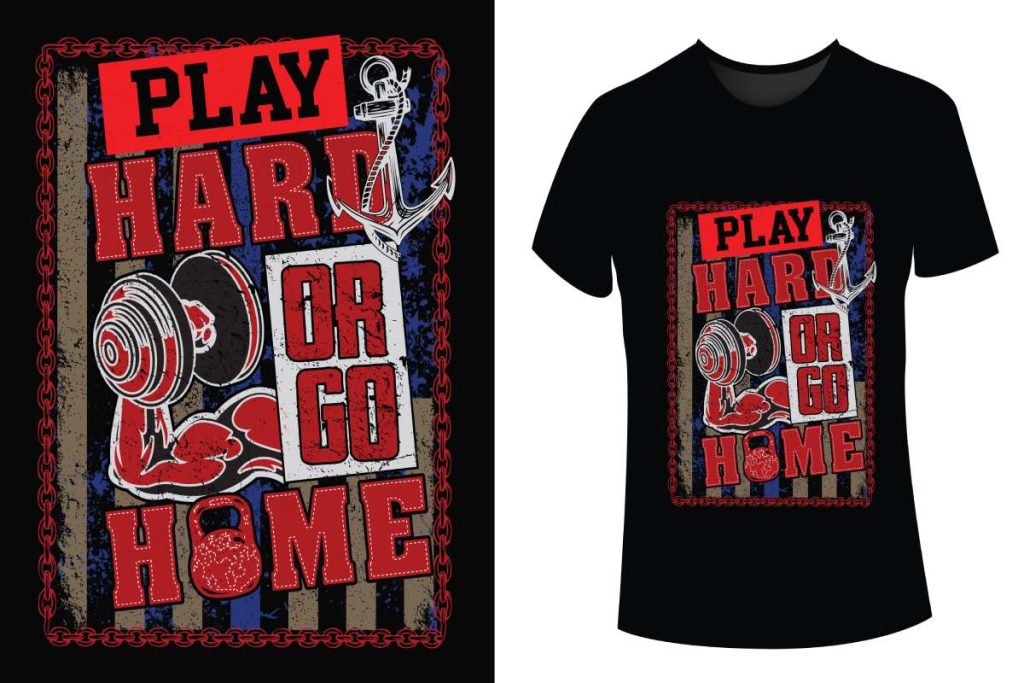DTF Supplies are essential components for businesses looking to elevate their garment printing capabilities. The Direct-to-Film (DTF) printing process is revolutionizing how designs are rendered onto various fabrics, enabling bold colors and durable results that stand the test of time. As we delve into the world of DTF, we’ll uncover the critical aspects to consider when selecting top-notch DTF film, DTF inks, and adhesive powders. Each of these elements plays a pivotal role in ensuring high-quality outputs, making informed purchasing decisions all the more vital. Join us as we explore how the right DTF supplies can enhance your business, streamline production, and satisfy your clients’ creative needs.
When diving into the realm of digital fabric printing, it’s crucial to understand the variety of materials and tools required to achieve optimal results. Terms like direct-to-film materials, printing enhancers, and bonding powders come into play as you explore the vibrant possibilities offered by this innovative technique. By understanding the significance of film quality, ink compatibility, and efficient adhesive applications, businesses can streamline their production processes. Exploring these factors not only leads to better print outcomes but also shapes the overall customer experience. Let’s break down what you need to know about sourcing high-quality supplies for garment printing.
Understanding DTF Film Types
When it comes to DTF printing, the type of film you choose is paramount. DTF films come in various grades, each designed for specific printing needs. High-quality DTF films are engineered to transfer vibrant colors while maintaining a soft hand feel on the fabric. It’s essential to look for films that guarantee durability and washability, as this directly affects customer satisfaction and repeat business. Always test different films on your specific printer to determine the best match for your production requirements.
Additionally, consider the compatibility of the DTF film with your chosen inks. Some films work better with specific types of DTF inks, which can influence the vibrancy and longevity of your prints. It’s advisable to consult with suppliers regarding the ideal combination of film and inks to ensure optimal performance and quality in your printing process.
Selecting the Right DTF Inks
The choice of DTF inks is a critical component of the printing process. DTF inks are designed to yield bright, long-lasting colors, making them essential for achieving high-quality results. Look for inks that are not only vibrant but also environmentally friendly, aligning with the increasing consumer demand for sustainable products. Advanced formulations can also enhance adhesion and durability, preventing peeling or fading, which is vital for maintaining client satisfaction.
Moreover, it’s important to consider the curing process of the inks you choose. Different inks may require specific curing times and temperatures, so ensure that they align with your production workflow and equipment. Consulting with industry experts or suppliers can provide valuable insights into selecting the right inks that meet both quality and efficiency criteria.
The Importance of Printer Compatibility
Opting for a printer that is specifically designed or modified for DTF printing can significantly impact your business’s output quality and efficiency. Compatibility between the printer and DTF supplies, which include films and inks, can prevent many common issues such as ink clogging or poor transfers. For businesses starting in DTF printing, researching reliable printers that are praised by industry professionals can save time and resources in the long run.
Furthermore, understanding the specifications of your printer will allow you to optimize the settings for DTF printing. Each printer has its capabilities, and knowing how to leverage the full potential of your machine can lead to improved print quality and consistency. Joining professional forums and communities can provide additional insights from other users on maximizing printer performance with DTF supplies.
Choosing the Best Adhesive Powder
Adhesive powder is a crucial component in the DTF printing process, serving as the bond that adheres the printed film to the fabric. The choice of adhesive powder directly influences the durability of the print, especially after multiple washes. Higher-quality adhesives not only offer better adhesion but also ensure that the designs maintain their integrity over time. Look for low-cure powders, which allow for faster processing without sacrificing quality.
Also, investigate suppliers that specialize in DTF adhesives, as they often provide detailed specifications regarding the performance of their products. Understanding how different adhesive powders interact with various fabrics can help you make informed choices that enhance your printing results and streamline your production process.
Balancing Cost and Quality in DTF Supplies
When sourcing DTF supplies, there is often a significant challenge in balancing cost against quality. While it may be tempting to choose cheaper options, these can lead to higher failure rates and increased returns from dissatisfied customers. Investing in quality DTF supplies upfront can result in longer-lasting prints, customer loyalty, and ultimately greater profitability for your business.
It’s beneficial to assess the long-term costs associated with different suppliers and products. Look for those that provide samples or trial runs, allowing you to gauge the quality before committing to larger orders. This strategy can mitigate the risk of purchasing ineffective supplies that could hinder your production capabilities.
Evaluating Supplier Reputation for DTF Supplies
Selecting a reputable supplier for your DTF supplies can make a significant difference in your business operations. A well-regarded supplier typically offers reliable products, transparent pricing, and excellent customer service. Reading reviews and testimonials from other businesses can provide insights into the quality of products and the level of support you can expect. It’s essential to work with suppliers who are well-established in the DTF printing industry and can offer guidance based on their experience.
Engaging with suppliers that have a track record of innovation and customer satisfaction is also beneficial. They often provide valuable resources, such as technical support and troubleshooting, which can help your business optimize its DTF printing processes. Investing time in choosing the right suppliers can lead to sustained success in the competitive market of garment printing.
Frequently Asked Questions
What are the best types of DTF Supplies for garment printing?
When selecting DTF supplies for garment printing, prioritize high-quality DTF films and inks that are specifically engineered for this process. Look for eco-solvent or water-based inks for vibrant colors and environmental benefits. Additionally, choose reliable adhesive powders and ensure compatibility with your printing equipment to maximize print quality.
How does the DTF printing process work?
The DTF printing process involves several critical steps: First, a design is printed onto a DTF film, which is then coated with adhesive powder. After curing the adhesive with heat, the film is pressed onto the fabric. Each aspect of DTF supplies, from film quality to adhesive, directly affects the durability and vibrancy of the final print.
Why is adhesive powder important in DTF printing?
Adhesive powder is crucial in DTF printing as it ensures a strong bond between the printed DTF film and the fabric. High-quality adhesive powder maintains the integrity of the design even after multiple washes, enhancing the longevity of the garment. Choosing the right adhesive can significantly improve production efficiency.
What should I consider before choosing DTF inks?
When choosing DTF inks, consider factors such as color vibrancy, transferability, and compatibility with your printer. Opt for inks that are eco-friendly and offer strong adhesion to various fabric types. Ensuring that your selected inks are optimized for the DTF printing process will greatly improve the quality of your prints.
How can I ensure my DTF supplies are compatible with my printer?
To ensure your DTF supplies are compatible with your printer, it’s essential to check manufacturer specifications and guidelines. Research popular printer models recommended for DTF printing, such as modified Epson printers, and look for feedback and reviews from other users discussing their experiences with specific DTF supplies.
What factors affect the cost of DTF supplies and their quality?
The cost of DTF supplies can vary based on numerous factors, including the quality of materials (films and inks), the brand, and supplier reputation. While lower-cost DTF supplies may seem appealing, investing in higher quality products can reduce long-term costs due to fewer failures and reprints, ultimately enhancing your profitability and customer satisfaction.
| Key Consideration | Importance | Recommendations |
|---|---|---|
| Quality of Film and Inks | Critical for vibrant colors and durable prints | Choose films designed for DTF; opt for eco-solvent or water-based inks. |
| Printer Compatibility | Ensure optimal equipment performance | Select printers specifically for DTF printing, like modified Epson models. |
| Adhesive Powder | Binds film to fabric; affects wash durability | Invest in high-quality adhesive powders for great results. |
| Transfer Process | Critical for efficient production workflow | Select supplies that enhance ease of use during the transfer. |
| Cost vs. Quality | Balancing expense and output quality | Choose quality supplies to reduce long-term costs. |
| Supplier Reputation | Affects product choice and customer service quality | Research suppliers for reliability and support. |
Summary
DTF Supplies are essential for any business aiming to excel in the garment printing industry. The importance of selecting high-quality films, inks, and compatible printers cannot be overstated, as these choices will directly impact the vibrancy and durability of your prints. Furthermore, understanding the role of adhesive powder in securing designs and considering the reputation of your suppliers will ensure that your business runs smoothly and efficiently. To stay ahead in a competitive market, it is also crucial to keep up with sustainable practices and emerging technologies. By making informed decisions about your DTF Supplies, you can enhance your production quality and grow your business effectively.



